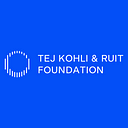A Rundown of the UN Violence Against Women Statistics: An Exploration into Discrimination
Violence against women is defined by the United Nations as “any act of gender-based violence that results in, or is likely to result in, physical, sexual, or mental harm or suffering to women, including threats of such acts, coercion or arbitrary deprivation of liberty, whether occurring in public or in private life.”
The 25th of November to the 10th of December marks the period raising awareness of violence against women and girls. The 25th of November was the International Day for the Elimination of Violence against Women, a day for people around the world to speak up against gender-based violence and raise awareness if the issue. Not that it should be just one day that conversations about gendered violence, or any violence, should happen; these should be happening all the time. In government offices, in schools and in homes. The goal of talking about the issue is to prevent cases of violence. To suggest that it will be eradicated entirely is sadly improbable but prevention is very much achievable.
Statistics show that although men are tragically more likely to be the victim of homicide (81%), women are disproportionately more likely to be the victims of homicide in what is called the private sphere, so by their family or intimate partners. The ways, and reasons for which, boys and men tend to be killed is very distinct from the ways girls and women tend to be killed.
Femicide, a hate crime known as the intentional killing of girls or women, rates for 2021 were made public by the United Nations Office on Drugs and Crime and an estimated 81,000 women and girls around the world were killed intentionally in that year. Alongside that, around 45,000 (56%) were killed by a member of their family or intimate partner.
The area with the highest recorded number of women killed by family or intimate partners was Asia with around 17,800 fatalities. Followed by that was Africa with 17,200, Americans with 7,500, Europe with 2,500 and Oceania with 300 victims.
Along with the data, the report shows that progress in reducing tragedies like this has not been significant and action is needed to halt gender-related killings. First of all, the identification and counting of cases of femicide is difficult due to vast data gaps. This is partially because of places such as Africa, Asia and Oceania where the ties between national forces and international authorities are weak. In other cases it is simply because the killings are not reported or recorded by authorities.
Secondly, there is often data lacking in reference to the relationship between the victim and the perpetrator. Of the 81,000 women and girls that were killed intentionally in 2021, four in ten had no contextual information alongside the case which would allow for them to be counter as gender-motivated killings.
Gendered discrimination, unequal power balances and misogynistic social norms that women face the brunt of manifests in acts of extreme violence in all corners of the world. To understand and study these acts requires new methods of data collection and multi-sector relations.
This story is the initial introductory story as part of a series, An Exploration into Discrimination, by the Tej Kohli & Ruit Foundation. This series aims to explore how cataracts can affect the lives of women in low-income communities, and how deteriorating eye health can be a catalyst for discrimination and rising levels of inequality.
